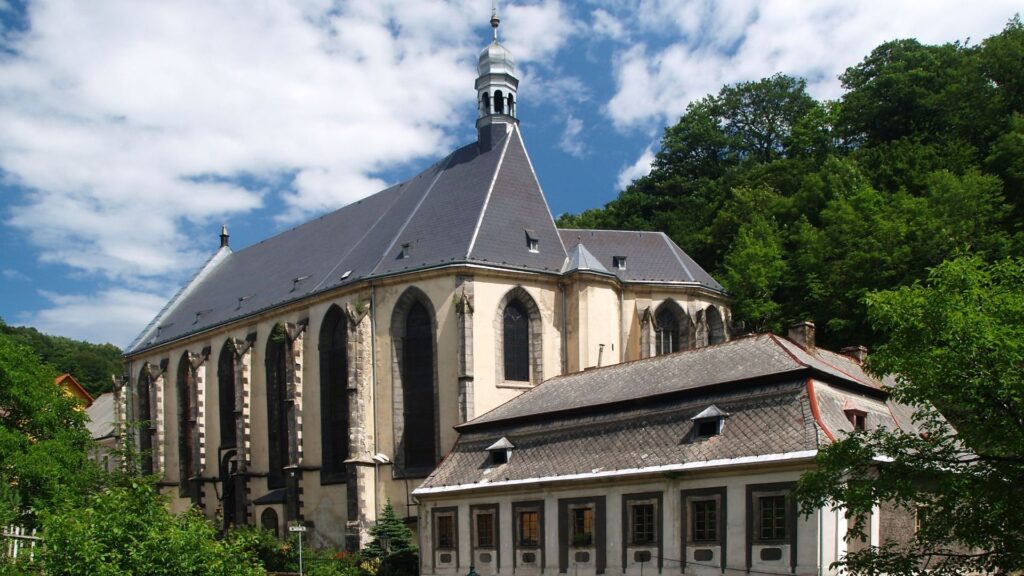The town of Krupka is located approximately 5 km north of Teplice at the foot of the Ore Mountains. Approximately 13,000 inhabitants live here. It is located in the Teplice district, in the Usti nad Labem region. The city center lies at an altitude of 262 m above sea level. From the Bohosudov district, only a few tens of meters from the Bohosudov stop, a two-seater cable car leads to Komari vizka. The cable car was built in 1950–1952 and with its 2348 m it was the longest cable car in Central Europe without an intermediate station. The elevation gain is 482 m.
The intrusion of the original mining town and mountain settlements is connected with the extraction of tin ore and its further processing. The first written mention of Krupka is contained in a document of King Wenceslas II. from 1305, when he acknowledges the hereditary claim of a certain Zvest of Trmice to a “place or mountain called Krupa”.
In 1478, King Vladislav of Jagiellonia issued a coat of arms, which granted the city a coat of arms, a seal, the prestigious right to seal with red royal wax and the right to appoint a mayor, councilors and city officials. In the 16th century, the estate found itself in economic distress and was gradually sold off.
In 1576, Emperor Rudolf II became the owner of Krupka. and after him his brother Matthias, who dedicated the castle and the manor to Adam of Sternberg.
In 1708, Krupka was bought by Count Frantisek Clary-Aldringen, whose family held it until 1918. The center of town life used to be Koldicovska, today Husitska Street. Miners and later craftsmen lived here.
In the 17th century, problems with mining activities began to appear, and tin sales stalled. The Thirty Years’ War adversely affected mining. In the nineteenth century, with the establishment of new factories and lignite mines, the center of events moved to Bohosudov.
For more information about the Usti Region where this place is located click here.

NOTE: Many features on this website require JavaScript. You can enable JavaScript via your browser's preference settings.